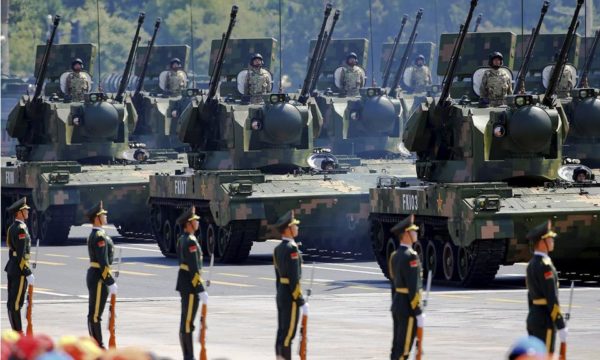India should learn lessons from its defeat in 1962 and stop clamouring for a war, China warned on Thursday, saying the precondition for settling the current stand-off in the Sikkim sector is that New Delhi withdraws its troops immediately.
China said its troops were building a road in its own territory and not on land that belonged to Bhutan.
People’s Liberation Army (PLA) spokesperson Wu Qian was reacting to Indian Army chief Gen Bipin Rawat’s statement that India was ready to take on China, Pakistan and internal security issues.
“Such rhetoric is extremely irresponsible. We hope (the) particular person in the Indian Army could learn from historical lessons and stop such clamouring for war,” he said at the monthly defence ministry briefing in Beijing, indicating China’s aggressive position in the current dispute.
The topic of a new 35-tonne tank, built and tested by China in the Tibet Autonomous Region (TAR), came up at the briefing, after a Chinese journalist asked whether it was better than its Indian counterparts and whether China will use it against India in a war.
“A type of tank undertook trial on the (Tibet) plateau. The purpose of is to test the parameters of the equipment and is not targeted against any country,” Wu said.
He said PLA troops responded to India troops trespassing into Chinese territory.
“The Indian border troop personnel have entered the Chinese territory in the Sikkim sector of the India-China borders. They tried to stop the normal activities of the Chinese border defence forces in the Donglang region. We carried out appropriate responses to halt these activities to safeguard our national sovereignty and territorial integrity,” Wu said.
When asked about the China-Bhutan boundary dispute in the Donglang area, Wu said it wasn’t true that PLA soldiers were operating in Bhutan.
“I have to correct you when you say that Chinese troops entered Bhutan territory.
“The personnel have been operating on the Chinese territory. We have made very clear to the Indian side that they should correct their wrong doing and withdraw their personnel from the Chinese territory,” he said.
The Donglang or Doklam area is located at the narrow but strategic tri-junction of India, China and Bhutan and not far from Nathu La pass. It is under Chinese control and lies within the TAR but is claimed by Bhutan. Thimphu doesn’t have diplomatic ties with Beijing, and the border dispute remains despite 24 rounds of negotiations between the two.
In separate press briefing, the foreign ministry said India must withdraw troops from the area to resolve the dispute.
“We urged the Indian side to withdraw troops… This is the precondition for the settlement of the incident and also the basis for us to conduct a meaningful dialogue,” spokesperson Lu Kang said.
Giving the briefing a touch of the dramatic, Lu briefly displayed a photograph of a map showing the Donglang area, saying it is part of Chinese territory.
“The Sikkim sector of the China-India border has a clear legal basis. There is solid legal evidence to support the delimitation of the Sikkim section of the China-India boundary. It is stated in Article One of the Convention Between Great Britain and China Relating to Sikkim and Tibet (1890) that the boundary of Sikkim and Tibet shall be the crest of the mountain range separating the waters flowing into the Sikkim Teesta and its affluents from the waters flowing into the Tibetan Mochu and northwards into other rivers of Tibet,” he said.
Lu did not comment on Bhutan issuing a demarche to China, asking Beijing to stop construction in the Donglang area.






Leave a reply